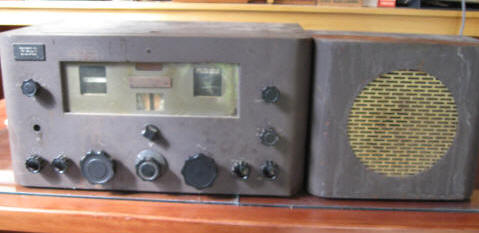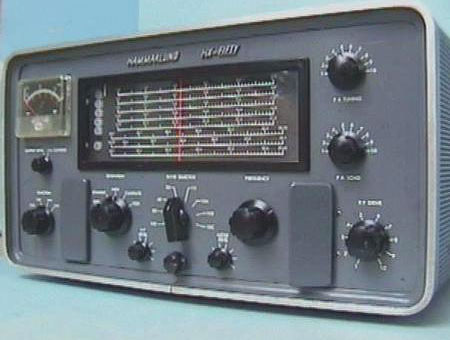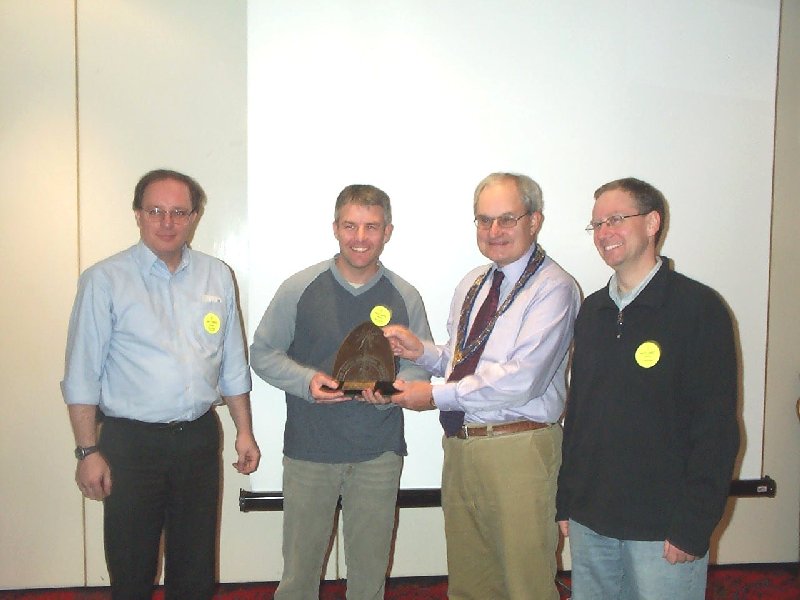Biography
October 5, 2025 - Reading time: 14 minutes
Born in 1965 and grew up in Petts Wood near Orpington in Kent. I was interested in electronics from a young age. Even aged eight I recall persuading Mum it would be an interesting experiment to see how bright a 6V lantern bulb would be connected to 240V mains - a short experiment!
 It was the acquisition of a Philips X40 electronics kit for Christmas 1975 that really set me on my path though. Amongst other projects that could be built on the universal PCB was a MW transmitter, which was really the one that fascinated me the most. I spent hours on end trying to get the signal further, although I never really managed much further than the end of the garden. By 1976 I had started subscribing to Everyday Electronics magazine and found an advert for a booklet detailing a variety of electronic projects which included a VHF FM transmitter that claimed to go 500m! This was positively DX for me at the time! I got the parts from other adverts in the back of that magazine and managed to achieve about 1 mile, after reading about 'dipole' antennas.
It was the acquisition of a Philips X40 electronics kit for Christmas 1975 that really set me on my path though. Amongst other projects that could be built on the universal PCB was a MW transmitter, which was really the one that fascinated me the most. I spent hours on end trying to get the signal further, although I never really managed much further than the end of the garden. By 1976 I had started subscribing to Everyday Electronics magazine and found an advert for a booklet detailing a variety of electronic projects which included a VHF FM transmitter that claimed to go 500m! This was positively DX for me at the time! I got the parts from other adverts in the back of that magazine and managed to achieve about 1 mile, after reading about 'dipole' antennas. At that time I didn't really think about electronics as a job and was aiming to join the RAF, as a pilot of course! This saw me join 173 Squadron (Orpington) Air Cadets in 1978, aged 13. I was delighted to discover that they had a radio room! To get to transmit you had to pass your VHF and HF exams to operate on those bands, and for the latter you needed to pass a 5wpm morse test. Generally we operated VHF to local squadrons during the week, using the callsign KT19, and joined a country-wide HF net on 4610kHz Sunday mornings, using the callsign SK4B80. Funny how I can still remember the details! They had various HF and VHF transmitters and receivers, but the one I spent most of my time on was the C11/R210 50W HF transmitter/receiver, like the one shown here.
At that time I didn't really think about electronics as a job and was aiming to join the RAF, as a pilot of course! This saw me join 173 Squadron (Orpington) Air Cadets in 1978, aged 13. I was delighted to discover that they had a radio room! To get to transmit you had to pass your VHF and HF exams to operate on those bands, and for the latter you needed to pass a 5wpm morse test. Generally we operated VHF to local squadrons during the week, using the callsign KT19, and joined a country-wide HF net on 4610kHz Sunday mornings, using the callsign SK4B80. Funny how I can still remember the details! They had various HF and VHF transmitters and receivers, but the one I spent most of my time on was the C11/R210 50W HF transmitter/receiver, like the one shown here.
I was really fortunate that another cadet told me he was going to enrol on a Radio Amateur's Exam course and that his Dad was teaching the course. Did I want to join him? His Dad turned out to be Norman, G3ZCV (SK), whom I have to gratefully thank for not only a lifetime's hobby but also a change in my career direction. During the RAE course I joined Cray Valley Radio Society and the RSGB. In those days a CVRS 'junk sale' was a sight to behold, and for my first proper receiver I managed to obtain an AR77E, like the one here, for £20. I remember stringing a 10m dipole across my bedroom and listening to US stations literally booming-in. That was the peak of solar cycle 21, and I've never heard signals like that on
During the RAE course I joined Cray Valley Radio Society and the RSGB. In those days a CVRS 'junk sale' was a sight to behold, and for my first proper receiver I managed to obtain an AR77E, like the one here, for £20. I remember stringing a 10m dipole across my bedroom and listening to US stations literally booming-in. That was the peak of solar cycle 21, and I've never heard signals like that on
10m since.
I wanted a transmitter to be ready for when I passed the RAE and bought a homebrew 10W Top Band AM transmitter via an advert. I also bought a dummy load from the same chap and so was able to listen to it on the AR77E. I was a bit alarmed by how loud the 2nd harmonic was, but in any case I never used it in anger because at another CVRS junk sale £25 and some persuasion got me a Hammarlund HX-50 'exciter', that could do 50W on CW/AM/SSB 160-10m, like the one shown in this photo.
from the same chap and so was able to listen to it on the AR77E. I was a bit alarmed by how loud the 2nd harmonic was, but in any case I never used it in anger because at another CVRS junk sale £25 and some persuasion got me a Hammarlund HX-50 'exciter', that could do 50W on CW/AM/SSB 160-10m, like the one shown in this photo.
I passed my RAE in 1980. Rather than apply for a callsign then, I waited until Norman helped me get my morse up to scratch for the 12wpm test. His technique was to send passages from Fanny Hill - you can imagine how that motivates a 15 year-old! I took the morse test at Admiralty House in London, passed and was issued the callsign G4KNO on 15th October that year.
The first QSO in my log was actually as G4KNO/A from Norman's QTH and was with G8XCI on 2m. The first HF QSO was from home with G3TBT on 80m SSB, using a 132ft inverted-L antenna. I still had a soft spot for 160m AM though and often joined G2WI (SK) and G4BWV (SK) at their regular 9pm slot for a chin-wag. The AR77E band-switch was so corroded that on the higher bands just placing the mic back on the table would send the receiver sailing off frequency. Fortunately, G2WI liked  refurbishing valve gear and at some point I did a deal with him to swap the AR77E with a Geloso G207-R, like the one here. This was a ham-bands only receiver, and ironically didn't have 160m, but I did then have a good deal of fun working stuff more further afield on the higher bands. This is probably when my interest in antennas started. I don't think I had the same antenna up from week to week!
refurbishing valve gear and at some point I did a deal with him to swap the AR77E with a Geloso G207-R, like the one here. This was a ham-bands only receiver, and ironically didn't have 160m, but I did then have a good deal of fun working stuff more further afield on the higher bands. This is probably when my interest in antennas started. I don't think I had the same antenna up from week to week!
I recall I discovered girls and cars at this point which resulted in a bit of a hiatus in my amateur career, but my interest was renewed when I received some exotic QSL cards from some of those HF band QSOs. I felt that to progress I really had to have a better radio, so splashed out on a second hand FT101Mk1. The receiver on the Mk1 couldn't really cope with 40m at night and the addition of a G3LLL replacement mixer just seemed to make it deaf, so a little later on I bought an FR101S and used it in transceive with the FT101. I could even operate split now!
Here's me as a 19 year-old sporting the standard mullet of the era in my shack (shed at the bottom of my parents garden), showing off my Yaesu gear.
By now I was doing a degree in Communication Engineering at Plymouth Polytechnic (now Plymouth University), so amateur radio time was restricted to holidays. During one of those summer holidays, and despite finding temporary work, I built a linear amplifier based on a pair of 813s in grounded grid, using an old CR100 as the chassis, with most of the parts sourced via G2WI again. You can just about see it behind my head, under the SWR meter. I've still got that amp stored away, but have never used it since those days. It was a bit 'seat of the pants', which you might translate as 'dangerous'. Also at this time I had got into 80m DX-ing and was fortunate to have trees in the right places to get a pair of dipoles spaced about 1/4-wave, which I phased just with a switchable added length of coax. Despite its simplicity and low height it managed about 15dB F/B and was great into NA and the Caribbean. I'll always look back with fond memories of those late nights and the warm people I met, like SK5PX, GW4OFQ (SK), GW4VEQ (SK), G4LMO, to name but a few.
All of that came to an end when I got my first job after graduating in 1988. I joined Roke Manor Research (then Plessey) as an RF Engineer and so had permanently left home. I must thank Julian G3YGF there for mentoring me and rounding off my education. In 1991 I moved to Cambridge to join Plextek, where Colin G4CWH is one of the directors and roped me into helping him with a 4m VHF NFD station, sparking my interest once again.
My biography wouldn't be complete without mentioning contesting, because that has been a major area of interest for me over the years. I first came across contesting at 13 when I stayed overnight with a CVRS effort in SSB Field Day. It was organised by Deryck G3VLX (SK), but the hot young guns were G4BUO and G4FAM (SK). If you're into contesting you'll know who they are! I've had a fondness for SSB Field Day ever since. In fact I met Mark G4AXX at Plextek and together with Simon G4EAG we did SSB Field Day together for some years, forming Granta CG in the process. We eventually won it in 2002, but haven't managed to repeat the feat. The photo below shows us receiving the G3PSH Memorial Trophy from Bob G3PJT, with Mark on the left and Simon on the right.
I currently live in the village of Lawshall, about 10km south of Bury St Edmunds in Suffolk. Equipment includes a IC-7610 and an Expert 1K-FA linear.
I work for Samsung in Cambridge, helping design Bluetooth and WiFi chips.
Acknowledgements
Philips X40 graphic: http://ee.old.no/radionic/
C11/R210 graphic: http://www.wftw.nl/larkspur/larkspur1.html#SEC13
AR77E graphic: http://oldradios.co.nz/forsale/radios/index.htm
HX50 graphic: http://www.qsl.net/la5ki/org/hm/hx50.htm
G207-R graphic: http://www.annunciprodotti.com/radio-ricevente-geloso-mod-g207r-della-meta-anni-50-P3162.html

